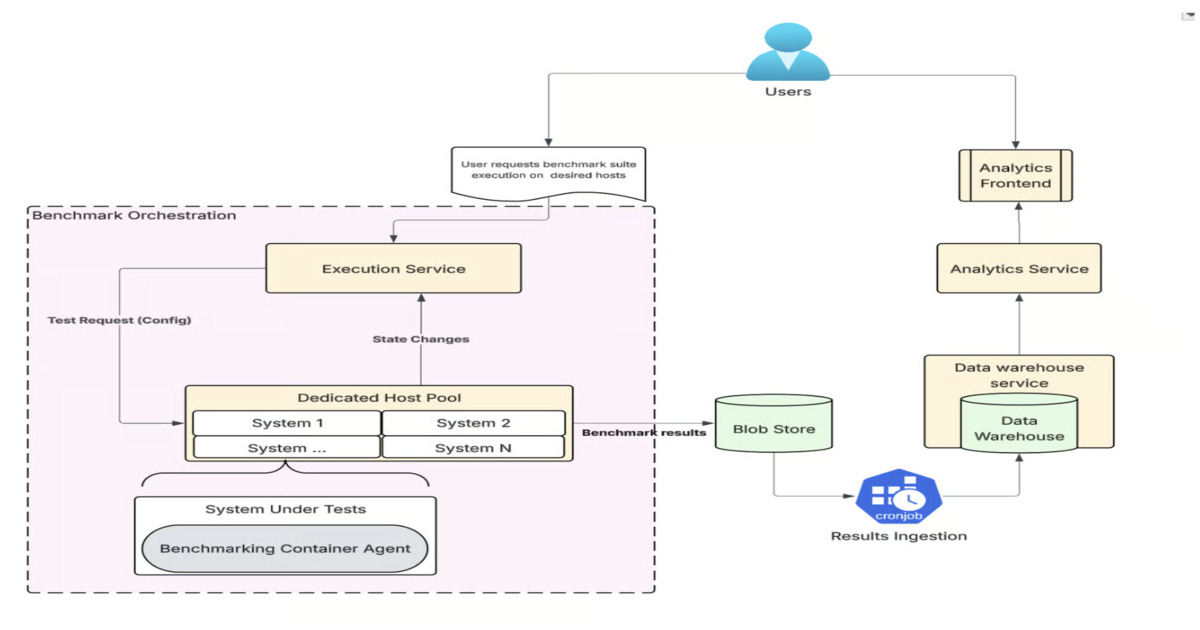Codetown
Codetown ::: a software developer's community
Setup project for multiple developers
Replies to This Discussion
-
Permalink Reply by Thomas Michaud on April 9, 2010 at 10:27am
-
Short Answer - Use Maven2 and Subversion (SVN).
Long Answer -
I recommend you use a Source Code Control program such as Subversion. All of your developers need to check code into and out of this.
Configure the subversion project with Maven2 (you could use Ant) to build a single war file.
Finally: You need to state to your developers you want a single WAR file for deployment. (And your developers should have already asked you how you want this deployed. Exploded WAR vs. Single (or multiple) WAR files. -
-
Permalink Reply by Jackie Gleason on April 9, 2010 at 11:22am
-
I agree with the previous poster except for one thing, I would add Hudson to the mix. Hudson is a very powerful tool that you can use to fire off whatever building you want to do using maven. So the steps would go something like this...
1.) User checks code into Subversion
2.) Hudson Recognizes the new commit and uses maven to build/run tests
3.) Hudson can then automatically deploy to whatever environment.
Of course you should also set up multiple environments so that commits are not automatically deployed to prod.
Long story short, research Maven, Subversion, and Hudson. -
-
Permalink Reply by Zemian Deng on April 9, 2010 at 1:35pm
-
These are basic infrastructure question, and I would suggest you re-use what's in your team's best talents first. Check with your team lead for his expertise in these area first. Everyone will have their own preference, and they work most efficiently with their strong areas. If you already got a team of 6, one would need to make decision for these and lead others to follow. Let the lead do what he does best with. If he is not good at it, he probably shouldn't be the lead in the first place.
With that said, I personally prefer a java development with these tools:
* Source Control: Mecurial (hg)
* BuildTool: Maven2 + Nexus Repository Manager
* Editor/IDE: JEdit and Eclipse with M2Eclipse plugin
* Project Management/Issue Tracker: Jira or Bugzilla
* Wiki: Confluence or MoinMoin
* BuiltServer: Hudson
Good luck with your team.
/Z -
Notes
Welcome to Codetown!
 Codetown is a social network. It's got blogs, forums, groups, personal pages and more! You might think of Codetown as a funky camper van with lots of compartments for your stuff and a great multimedia system, too! Best of all, Codetown has room for all of your friends.
Codetown is a social network. It's got blogs, forums, groups, personal pages and more! You might think of Codetown as a funky camper van with lots of compartments for your stuff and a great multimedia system, too! Best of all, Codetown has room for all of your friends.
Created by Michael Levin Dec 18, 2008 at 6:56pm. Last updated by Michael Levin May 4, 2018.
Looking for Jobs or Staff?
Check out the Codetown Jobs group.
InfoQ Reading List
Running Modern ES2023 JavaScript Inside Go Using QJS and WebAssembly

QJS is a CGO-free, modern JavaScript runtime for Go that embeds the QuickJS-NG engine in a WebAssembly module and runs it with Wazero, providing Go applications with a sandboxed ES2023 environment with async/await and tight Go–JS interoperability.
By Olimpiu PopAWS Launches Network Firewall Proxy in Preview to Simplify Managed Egress Security

AWS has unveiled the preview of its Network Firewall proxy, a managed service that optimizes proxy management and enhances outbound security for VPCs. Integrated with NAT Gateway, this tool inspects traffic through a three-phase model and supports both TLS interception and centralized models via Transit Gateway. Currently available in East Ohio.
By Steef-Jan WiggersCloudflare Open Sources tokio‑quiche, Promising Easier QUIC and HTTP/3 in Rust

Cloudflare has open-sourced tokio-quiche, an asynchronous QUIC and HTTP/3 Rust library that wraps its battle-tested quiche implementation with the Tokio runtime to simplify the development of high-performance QUIC applications. The library was used internally to back the edge services, the Oxy HTTP proxies or MASQUE-based tunnels replacing the Wireguard-based tunnels in the WARP client.
By Olimpiu PopUber Adopts Amazon OpenSearch for Semantic Search to Better Capture User Intent

To improve search and recommendation user experiences, Uber migrated from Apache Lucene to Amazon OpenSearch to support large-scale vector search and better capture search intent. This transition introduced several infrastructure challenges, which Uber engineers addressed with targeted solutions.
By Sergio De SimoneBenchmarking Beyond the Application Layer: How Uber Evaluates Infrastructure Changes and Cloud Skus

Uber’s Ceilometer framework automates infrastructure performance benchmarking beyond applications. It standardizes testing across servers, workloads, and cloud SKUs, helping teams validate changes, identify regressions, and optimize resources. Future plans include AI integration, anomaly detection, and continuous validation.
By Leela Kumili
© 2025 Created by Michael Levin.
Powered by
![]()